
Welcome to BSA Images of the Week.
Here’s our weekly interview with the streets, this week featuring CAM, David F. Barthold, JJ Veronis, Martha Cooper, Poi Everywhere, REVS, SoulOne, Tones, UFO 907, Winston Tseng, and WK Interact.
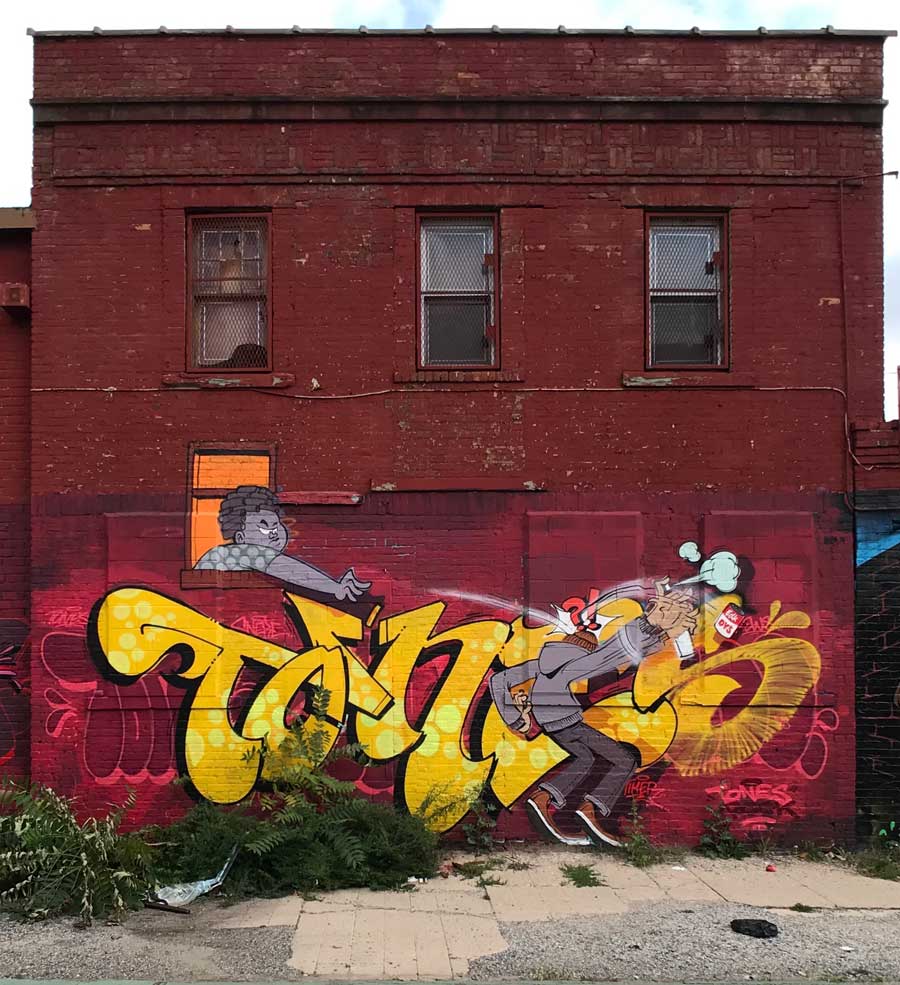
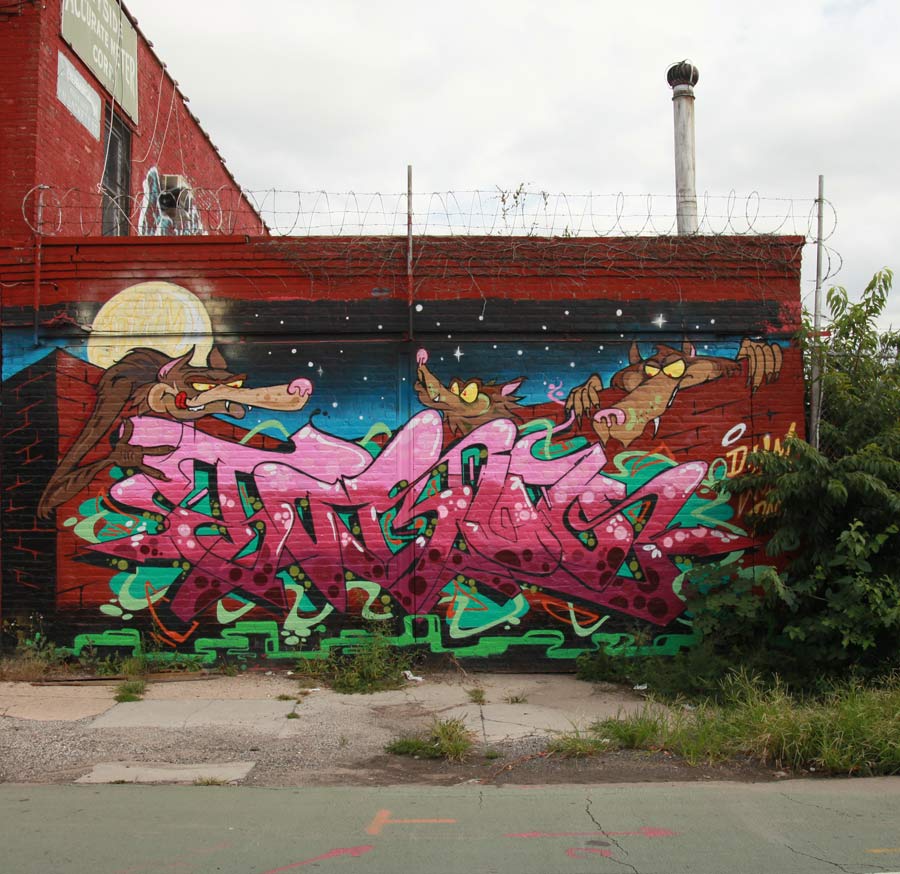
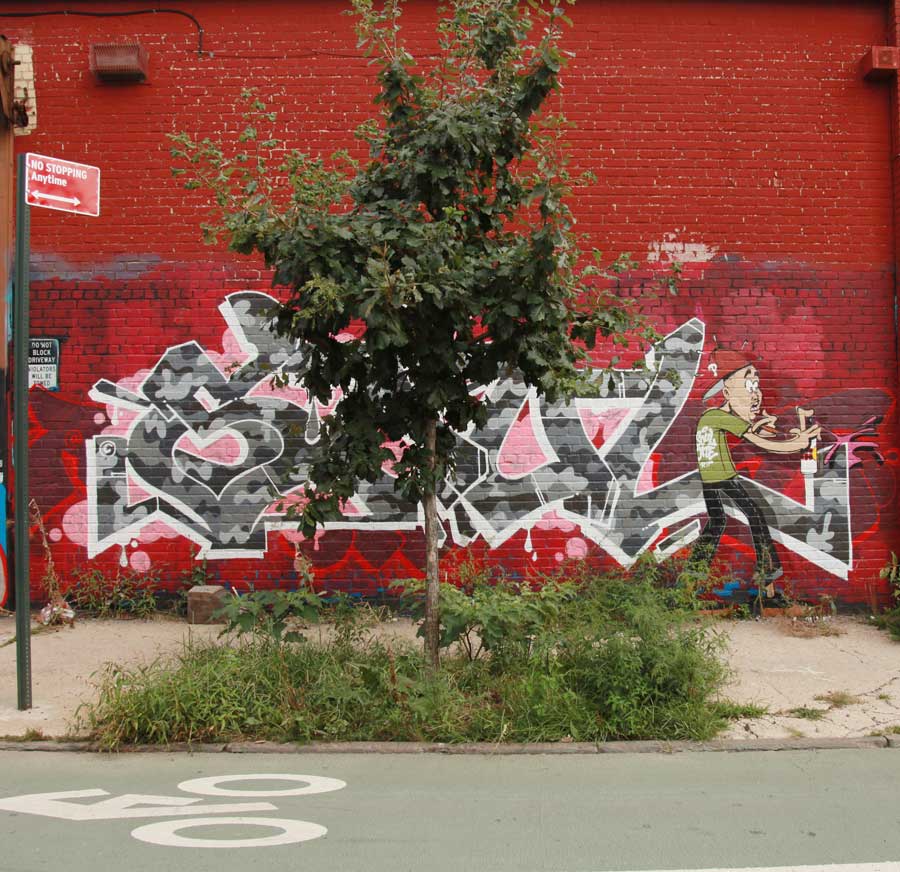
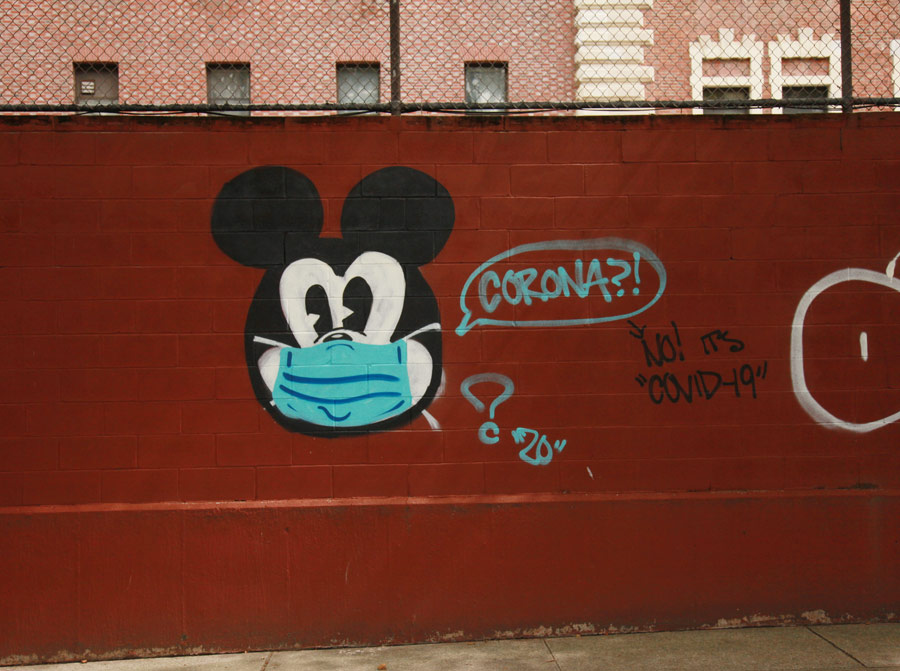
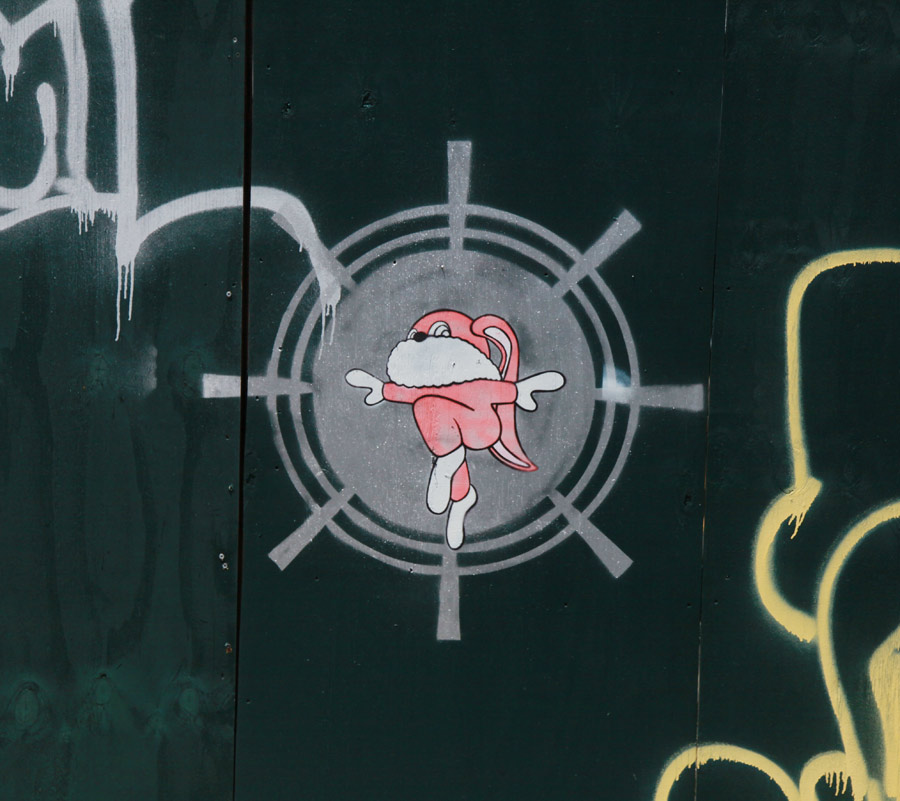
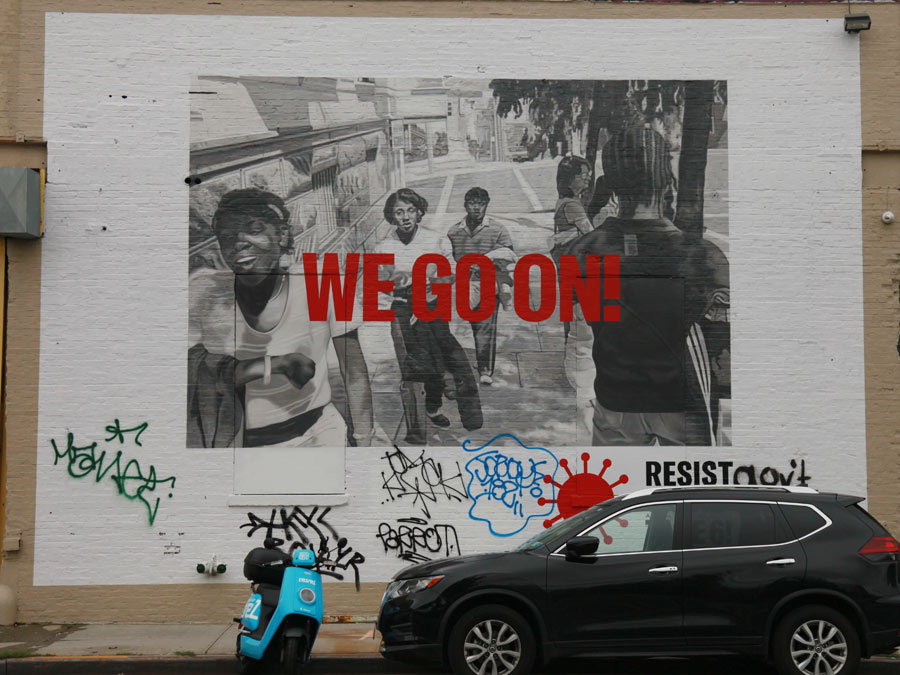
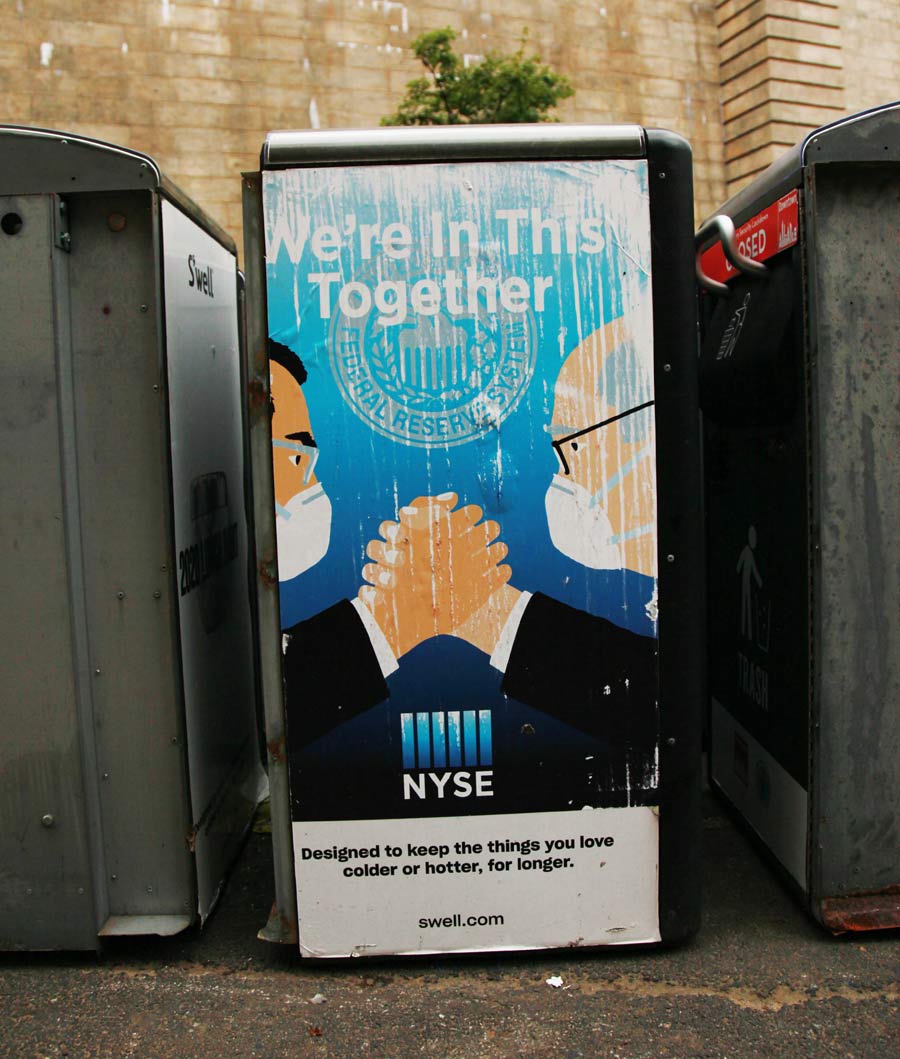
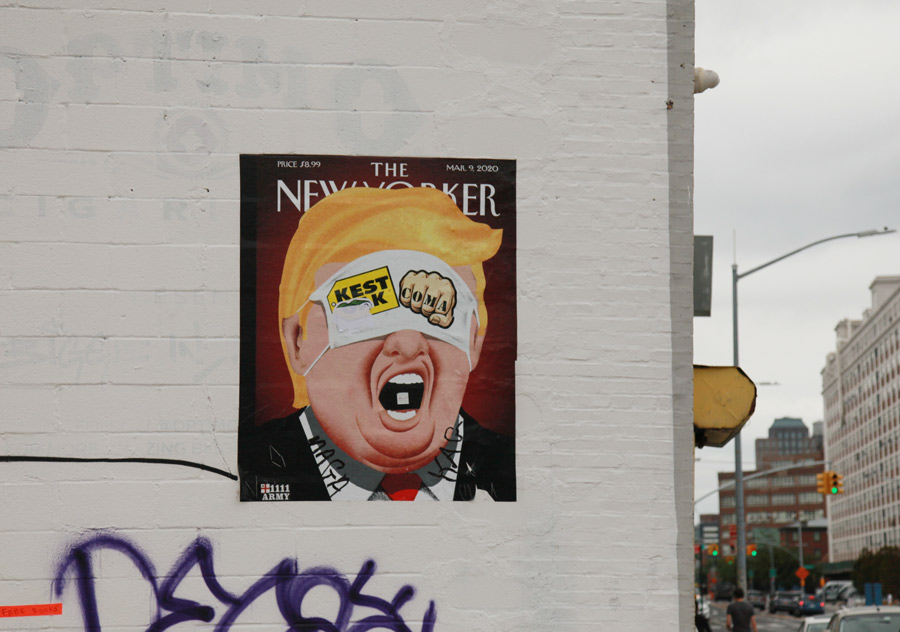
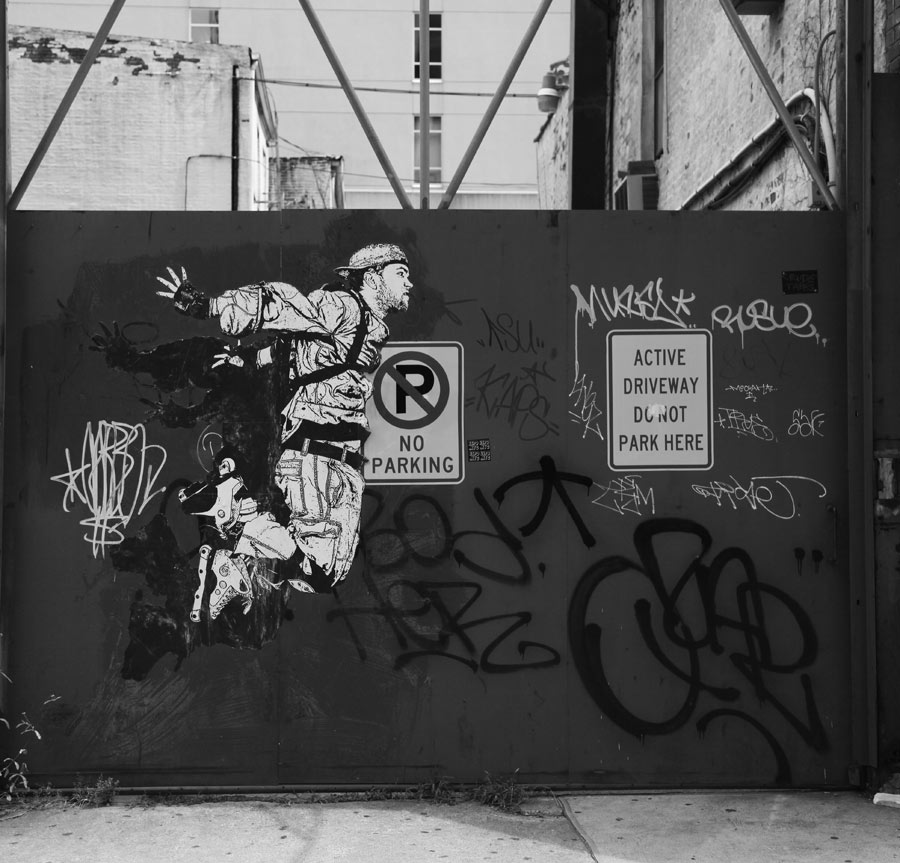
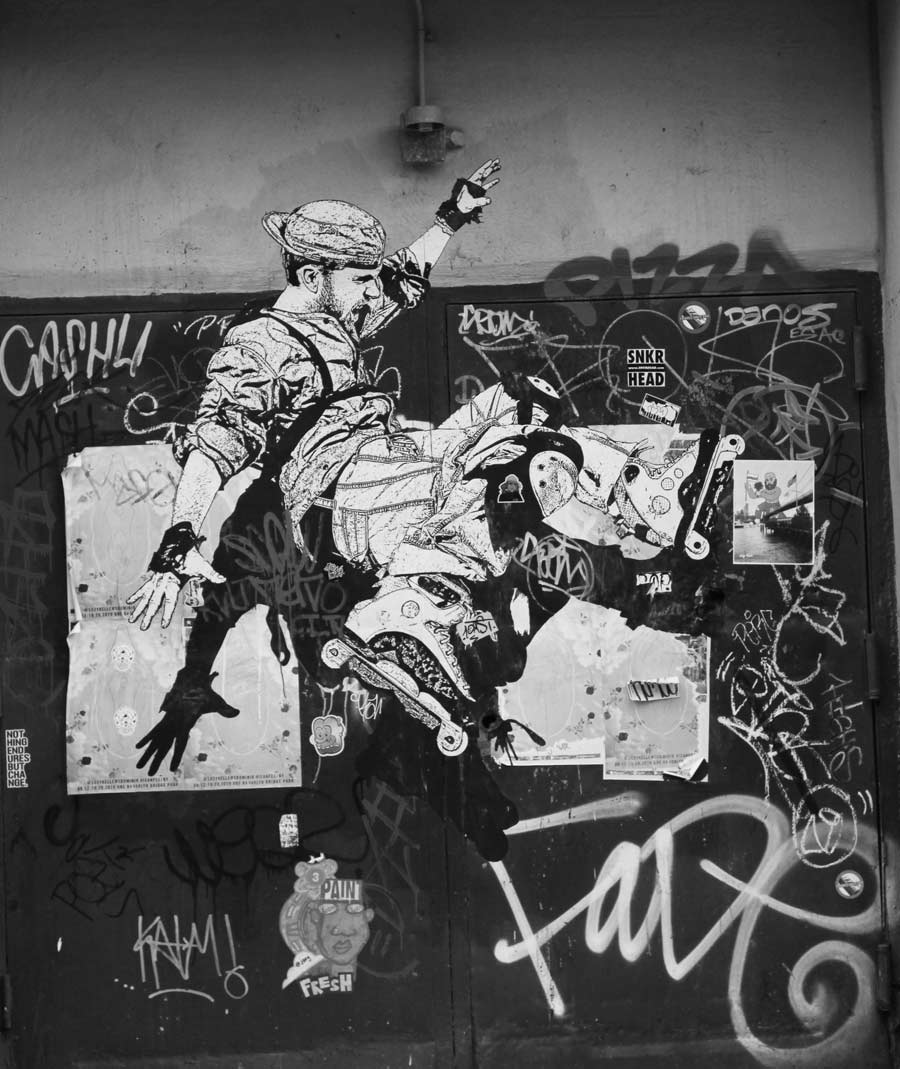
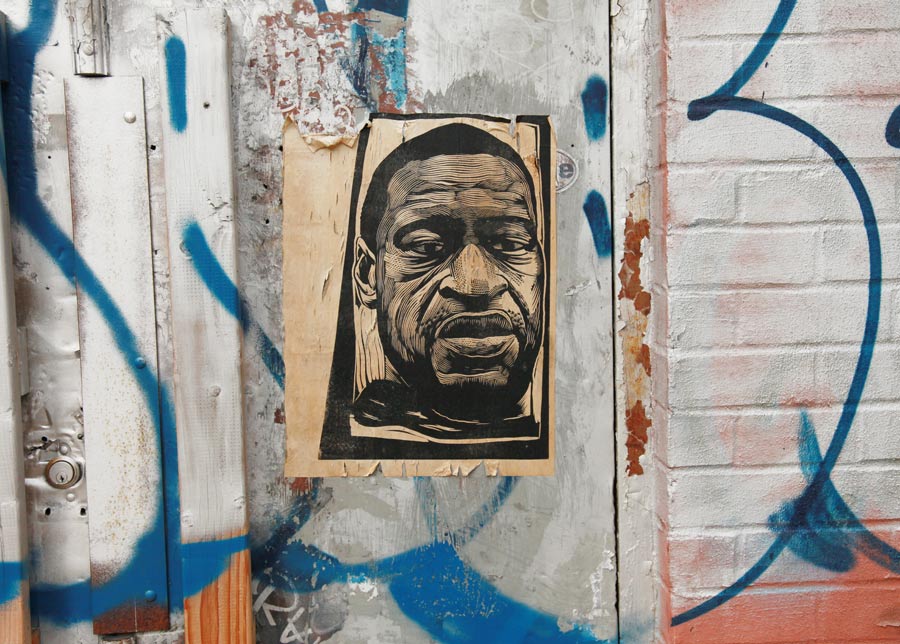
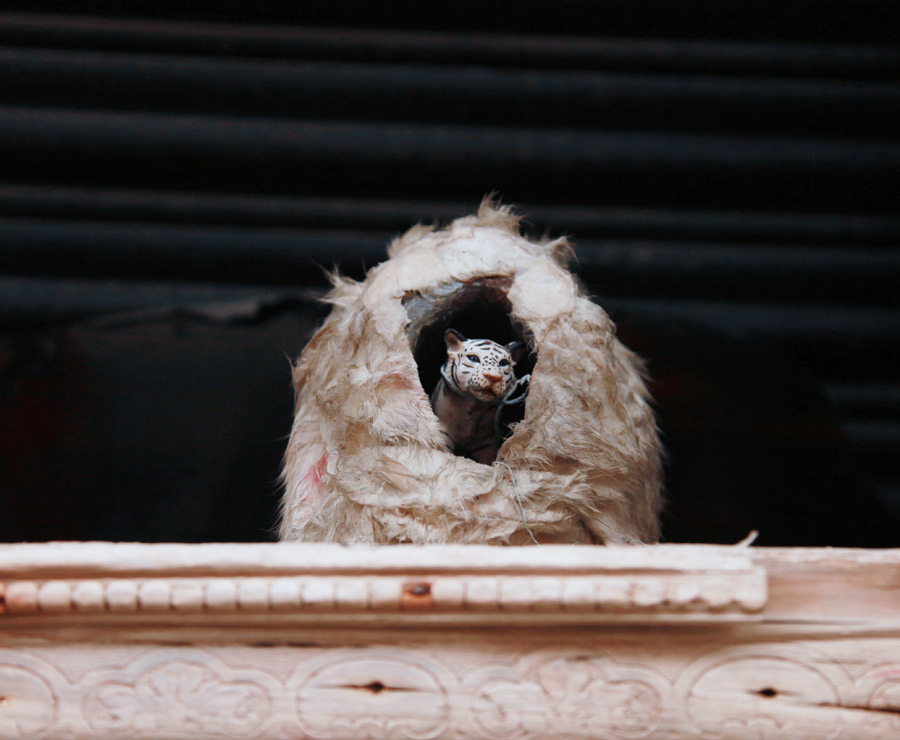
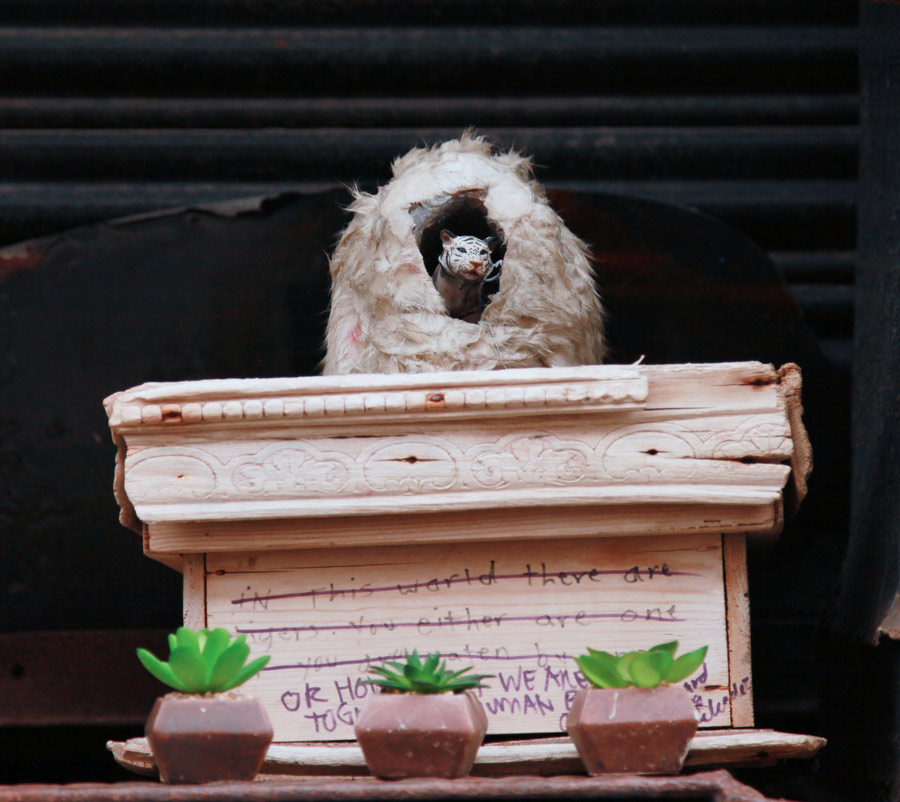
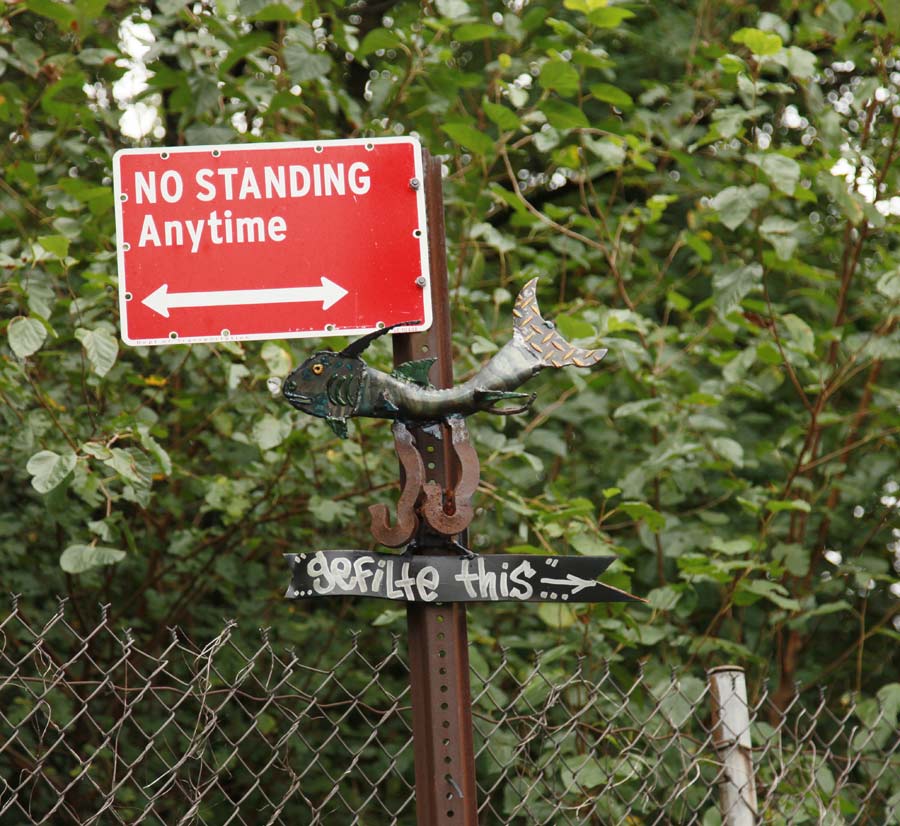
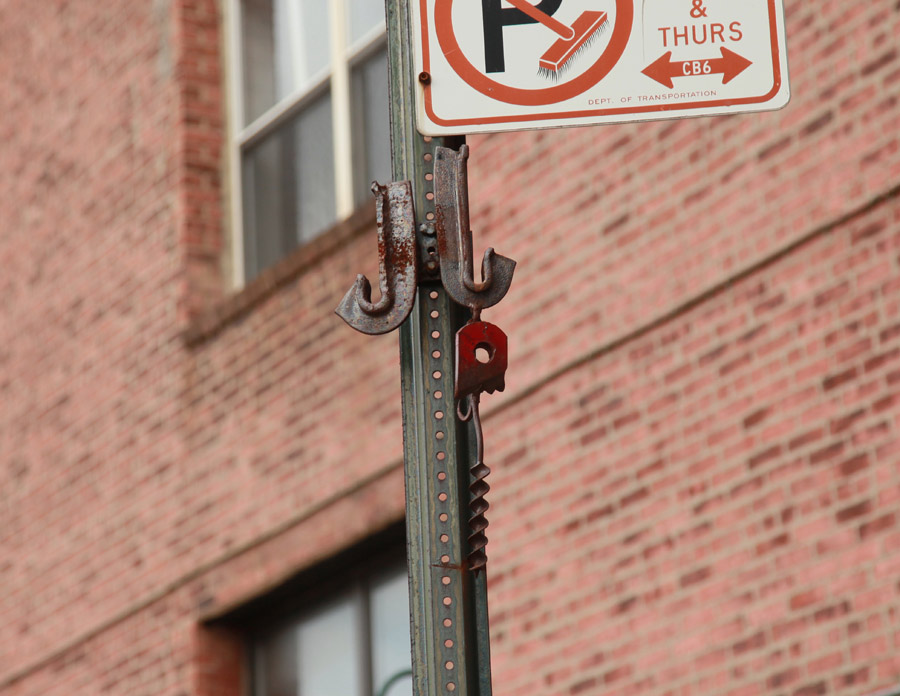
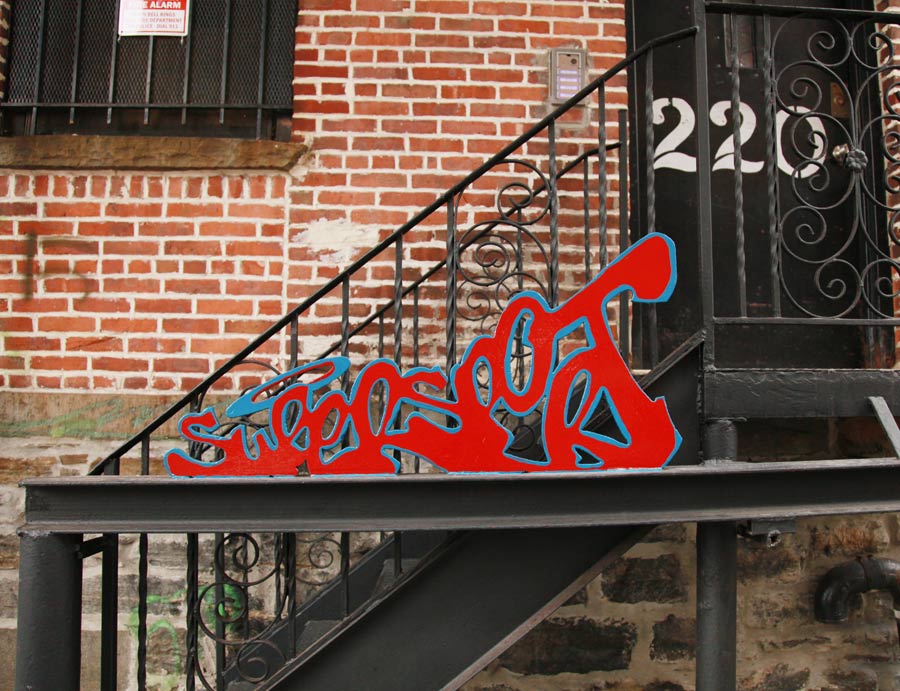
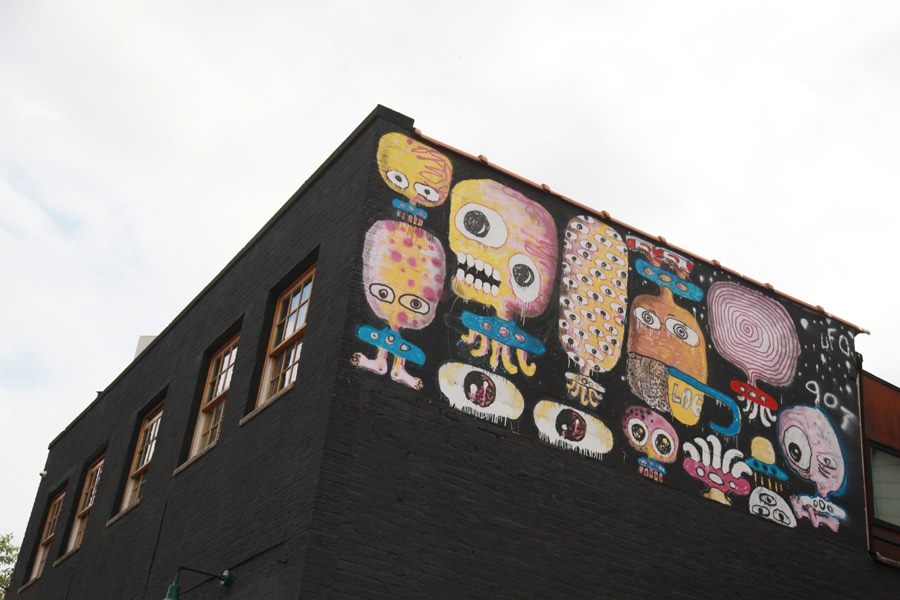
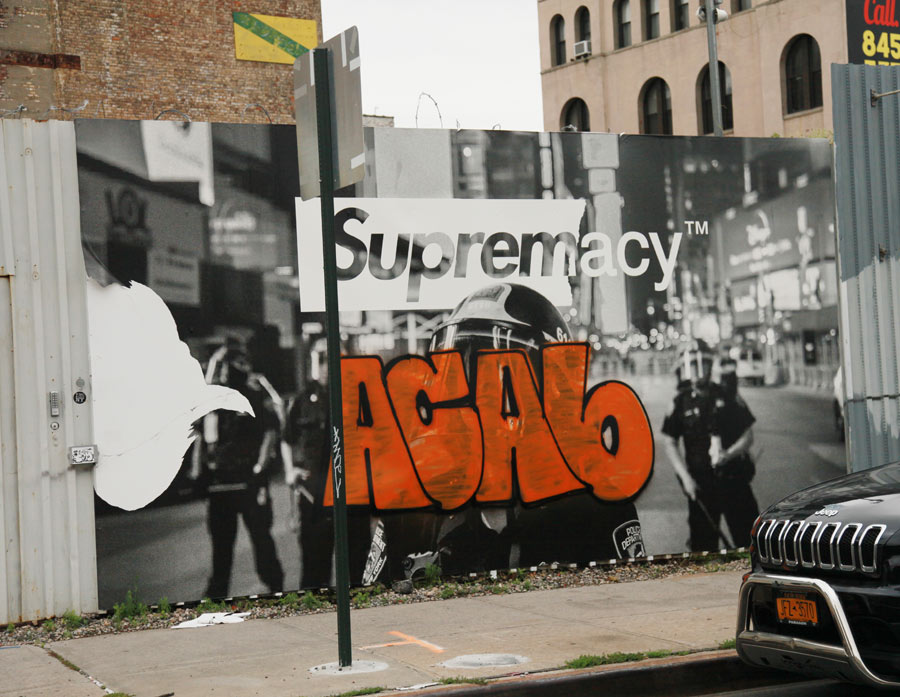
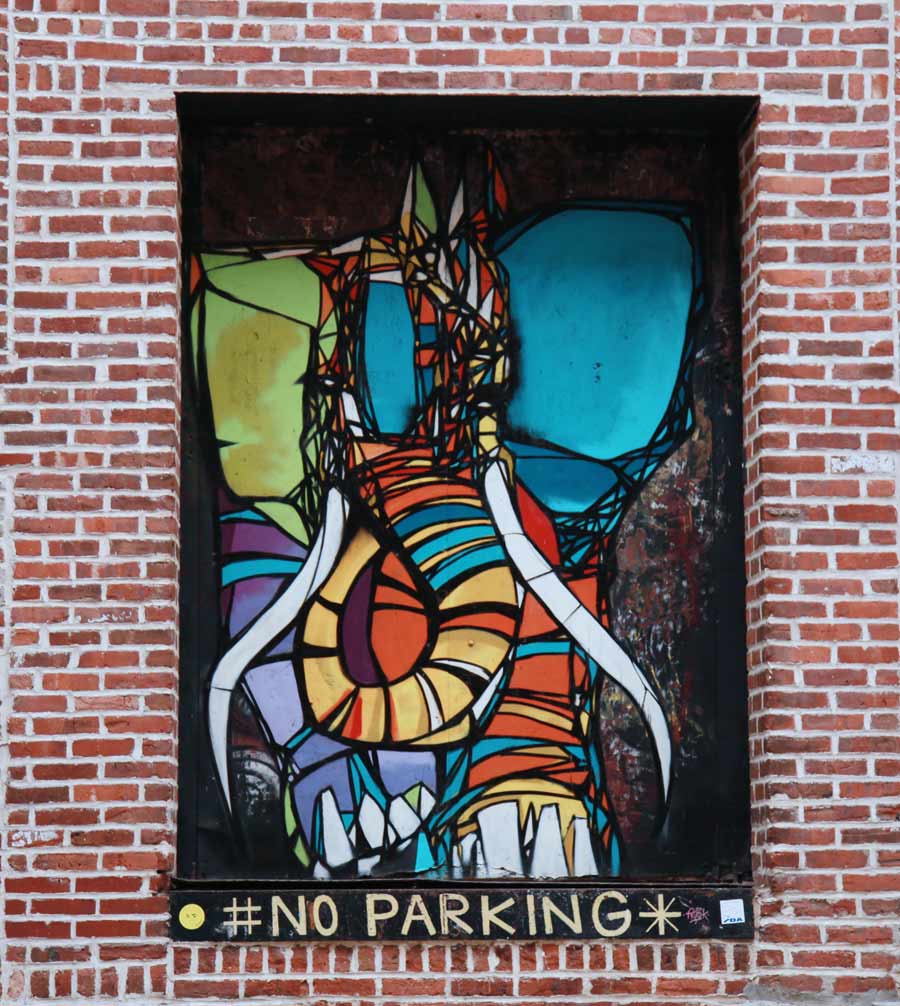
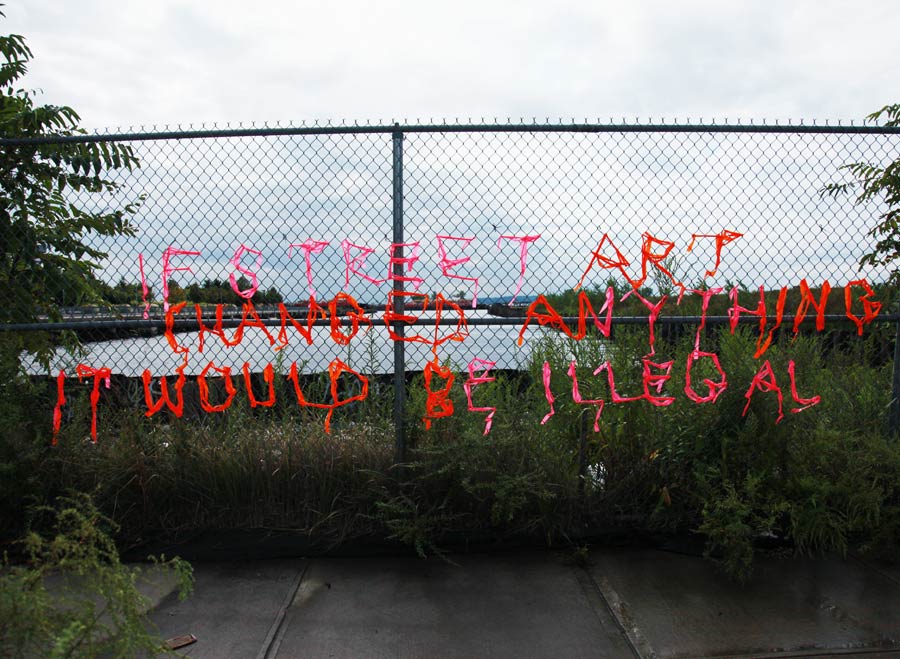
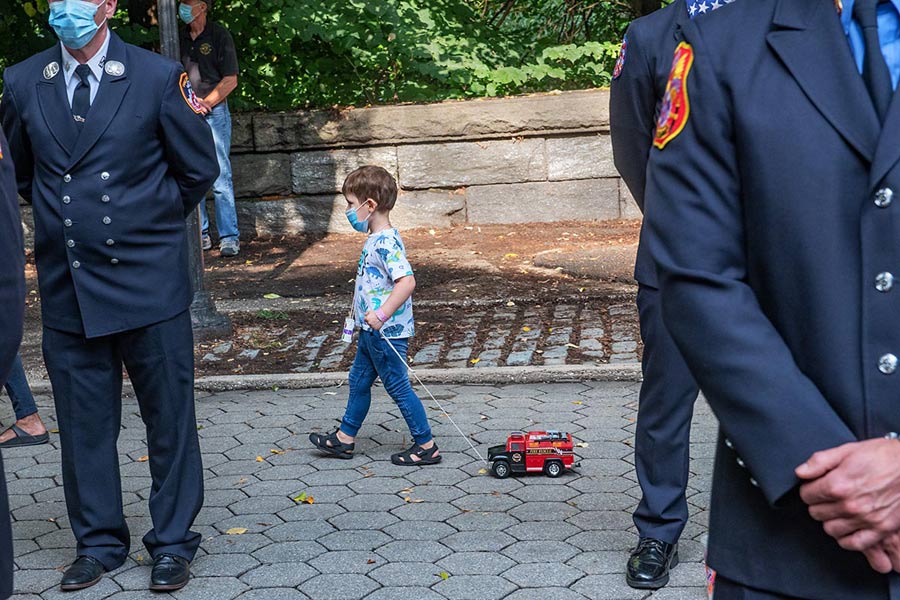
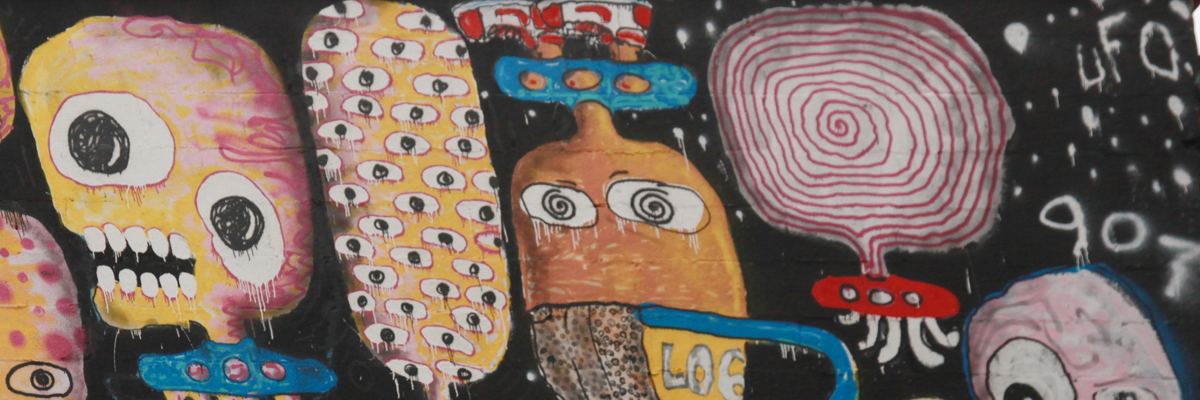

Welcome to BSA Images of the Week.
Here’s our weekly interview with the streets, this week featuring CAM, David F. Barthold, JJ Veronis, Martha Cooper, Poi Everywhere, REVS, SoulOne, Tones, UFO 907, Winston Tseng, and WK Interact.





















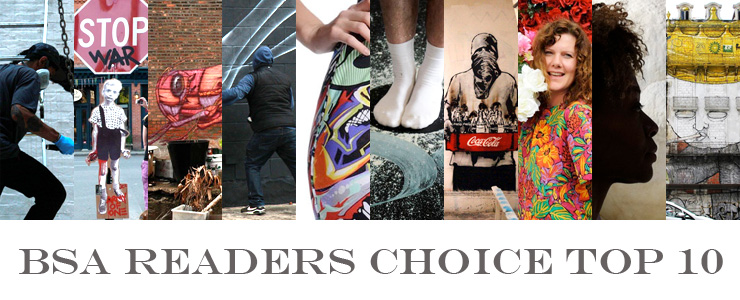
Happy New Year to All! Thank you for inspiring us to do our best and to those of you who continue to support our personal art project / cultural examination, we extend our gratitude more than ever.
Begun as an enthusiastic discovery of what was happening in a few neighborhoods in New York, we continued to expand our view into more cities around the world last year and into the history and future of the scene. We also aimed to provide you with a critical platform for examination of the street art/ graffiti / public art/ contemporary art continuum with interviews with artists, curators, collectors, organizers, observers and thinkers in the street, studio, gallery, and museum – trouble makers and taste makers alike.
In the end, it’s your observations and the conversations on the street that are most important. As we begin the year with over 300K fans, friends, and followers on social media platforms and 225 articles on the Huffington Post (thanks HuffPost team!), we feel like we get a valuable good survey of current opinions heading our way daily.
With in-depth interviews, investigative articles, opinion infused examinations, plain celebratory reverie, occasionally silly non-sequitors, and public appearances where we get to meet you, we get a good analytical look at an ever-evolving movement, glittery polish and warts and all.
As the new year begins we take a look back at the top stories chosen by BSA Readers in the last 12 months. Among them are two takeover pop-up shows in soon-to-be demolished buildings, a story about commercial abuse of artist copyrights and the effort to fight back, a street art community’s response to the sudden death of an activist street artist, a Street Art tourist trip, and a few inspirational women, men, and Mexican muralists. Even though we published at least once a day for the last 365 days, these are the most popular pieces, as chosen by you, Dear BSA Reader.
<<>>><><<>BSA<<>>><<<>><><BSA<<>>><><<>BSA<<>>><<<>><><BSA Please note: All content including images and text are © BrooklynStreetArt.com, unless otherwise noted. We like sharing BSA content for non-commercial purposes as long as you credit the photographer(s) and BSA, include a link to the original article URL and do not remove the photographer’s name from the .jpg file. Otherwise, please refrain from re-posting. Thanks! <<>>><><<>BSA<<>>><<<>><><BSA<<>>><><<>BSA<<>>><<<>><><BSA
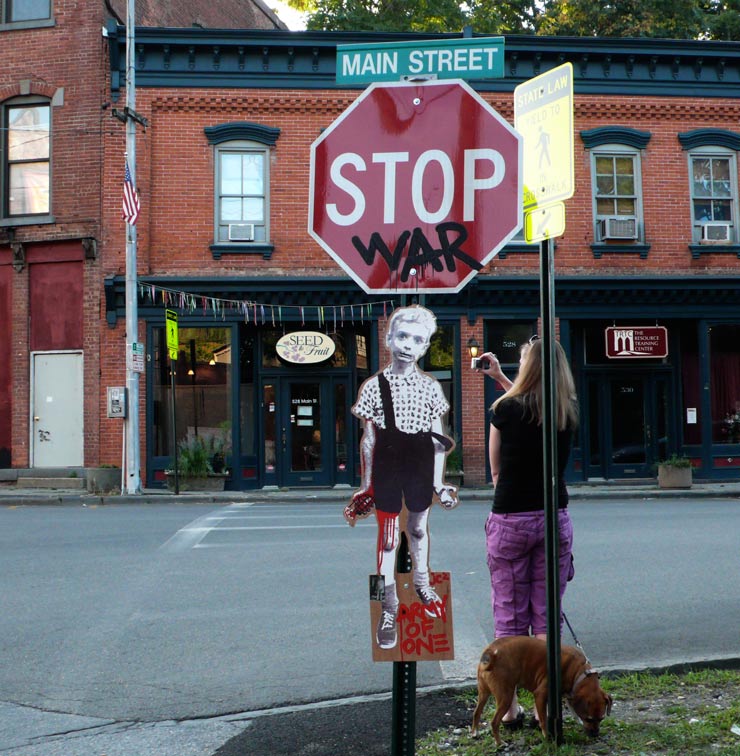
New York’s Street Art and graffiti scene learned this weekend of the passing of one of its artists, Jef Campion, who went by the name of Army of One/ JC2. Jef died at his home in Yonkers Friday night at the age of 52 and for those who knew him for his physically and personally powerful presence, the news came as a complete surprise.
A New Yorker through and through, Jef was known as a firefighter and first responder to Ground Zero after the 9/11 attacks who spent more than a month in that recovery effort, as a volunteer who gave a great deal of time and energy to working with charity organizations for children who were very ill, and for being a fine artist, a street artist, and an anti-war activist.
Speaking with many who knew him closely over the last few days, we learned that his days were not always light and he sometimes suffered from PTSD and related issues, but that he considered himself an overcomer and gave support and encouragement to his peers in the art world. We always saw him as a person who was determined to use his art and his creativity as a force for good in the world. He also knew how to walk the talk.
As a Street Artist he was perhaps best known for adapting a photograph by Diane Arbus entitled Child with Toy Hand Grenade in Central Park, New York City (1962), and converting it into a sharply graphic anti-war message that he reproduced numerous times in many sizes and mediums to put onto the street. “Army of One” was usually scrawled like a shouting slogan alongside the wheatpaste of the silhouetted image. Sometimes the text was in black and other times it was in a red that matched the dripping red grenade in the boys hand. A startling sight to encounter in a doorway or on a signpost, it was at once a protest and a warning that war is not child’s play.
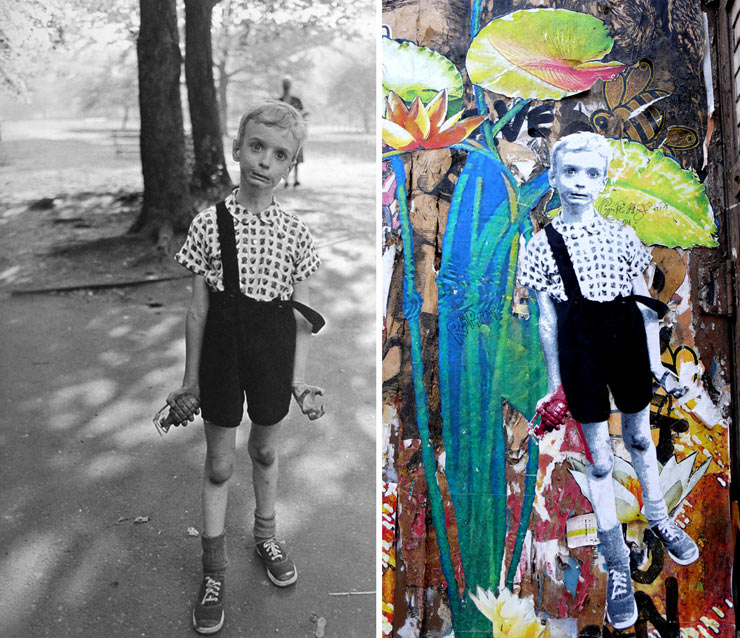
For Jef it was an effective way to remind us that war invariably damages those who have nothing to do with the fight, some of our most vulnerable and treasured people who suffer from our unspeakable callousness and disregard for life.
When Jef put this work out on the street it wasn’t to get personal fame as much as it was to change minds and hearts. Jef hoped his art could give voice to the voiceless. In recent years his own red-painted hand became as important a symbol of the insanity and brutality of war as any of his work created for the street.
Our condolences and thoughts and prayers go out to Jef’s family and friends today on Martin Luther King day and in the difficult days ahead. We also send our hopes that they can take comfort in knowing how much of a positive influence he was on many artists and peers, as well as complete strangers and passersby. Following we share with BSA readers remembrances from five people, but we easily could have presented many more.
GILF!
Street Artist and social, political, cultural advocate.
I met Jef during Art Basel Miami in 2011 at Fountain Art Fair. I had been familiar with his street work but was ultimately introduced to him by Samson Contompasis. He immediately went out of his way to include and befriend me, and with a megawatt smile on his face.
Jef reached out to me for a project about a year ago via email. We met up in person and had a lengthy discussion about war, the children at risk, and our ability to facilitate change for these young lives. He was always so focused on how he could help others. You could tell how passionate he was about the destruction of war with his work through his words and through his actions.
He never gave up, was always trying to do more to help, and feared no one. He did all of that while constantly supporting his friends and lending a hand whenever needed. His smiles and laughs were infectious and you couldn’t help but be happy around him. I will be forever grateful to have known such a righteous and honorable soul. His rebel spirit will continue to inspire me as I find ways of coping with this loss.
Of many we are all an Army of One.
Sinxero (SX)
Fine Grafstract artist, designer and gallery/mural curator based in The Bronx
I first met Jef, aka: “Army of One” at the “Street Artists Unite” exhibit at Dorian Grey Gallery where Jef was showing his art, a body of work and presence that commanded your attention. Jef and I shared a vision where artists could make a difference as “Comrades In Art”. Combining our artistic and business related goals, Jef and I formed “The Army Grows,” (TAG), with him as a resident activist. We expanded our mission to encourage both street & graffiti artists to work together and now TAG is also known as “The Art of Grafstract”.
Jef’s plethora of knowledge was priceless. His street & fine art grind was hard and direct, undiluted.
Why was Jef important to me and the Street Art / Graffiti scene? One day I remember showing up early to one of his many exhibits. Upon arriving Jef said, “let’s take a walk, its still early.” As we walked down Orchard Street, Jef took notice of a pair of gentlemen’s boots in a window display and walked in to ask the salesperson for his size. As we sat and waited for the gentleman to come back Jef and I discussed curating murals, owning your moniker and how to reach out to sponsors in order to build your name up. He told me that sometimes it is better to slow down and take notice of all that’s around you and address things one at a time – a better approach than it’s complete opposite.
I am grateful for having met Jef and having been given the opportunity to see life through his eyes. If anyone could walk a mile in Jef’s boots in the way he gave, embraced and loved as a friend, artist and compassionate human being they would be king for a day.
Jef, you were truly an “Army of One.” In your name, “The Army Grows.”
Fumero
Street artist and fine artist.
I first noticed Army of One back in 2009 with his use of the Diane Arbus’ photo, ‘Grenade Boy’ and another graphic that followed, ‘The Bride of War’. As I walked the city streets after midnight, I always ‘ran into’ Jef (AoO) everywhere I went. I appreciated the image. It caught my attention because it had a gritty, NYC quality about it.
As a street artist, you usually meet others through their work first and later you actually wind up meeting the artist in person. I met Jef during the summer of 2010 at an upstate New York street art event. The moment we exchanged stickers, we already had a good sense of what the person was about. His message emphasized ‘peace’ and mine was about ‘family’.
Soon after that we met again to put some art after dark up in lower Manhattan and from that point on we became friends. In the years that followed we both participated in the same events here in NY and at Art Basel, Miami. Our greatest collaboration was for the XCIA’s Street Art Project book.
Army of One’s social commentary about needless wars that produce needless bloodshed was the central idea behind his message. I respected that notion and also that this message was everywhere. I admired his passion to spread his art and the enjoyment he received from it. Jef was a serious artist and if you knew him you understood why he was compelled to promote his idea to the public. His left a profound statement for us to never forget that each and every one of us has the freedom to be who and what we want to be and to live life accordingly and although we have different colors of our skin we are all ‘red’ inside and that makes us all the same; human.
I’m thankful to express my words about my friend. He will be missed. He was a force to be reckoned with, he was truly an army of one.
OCMC (Oh Captain My Captain)
Street artist and fine artist.
Jef was an important figure to me personally in the scene, as he was the first street artist I ever met. I had been doing it a while and saw his work everywhere. By a fluke the first art show I appeared in was a benefit show he was also in and we met there. It was exciting to meet someone who did what I did, and even more so because Jef was incredibly gracious and encouraging. It wound up we were from the same neighborhood so we shared a bond over that. From then on we were friends.
For the scene itself, I feel Jef was a very important voice. There is naturally a lot of ego in street art and graffiti. Jef’s art was about the meaning, not the advertising. He felt deeply for his cause and it was loud and clear in his artwork. Loud like that grenade of his.
Many of the posts I have seen since his passing describe him as a “great guy”, and how kind he was… And it’s very much the truth. Jef was a truly great man. His job involved saving peoples lives, his spare time involved helping kids with cancer, and his art involved his deep belief that war is never the answer. He wasn’t just a great voice out in the streets, his was a great voice for the world.
There’s a show coming we were both going to be in, and I am going to miss the way he would light up when he’d see me with an “OCMC!” and the hug that would follow… It always felt great to stand in the light Jef shined on you. But I am hardly unique there, because he made everyone feel like that light. That’s what I’ll remember most.
Samson Contompasis
Former gallery owner and artist
I worked with Jef at a few different points to help his studio work reach more people. I found Jef the same way many other people did, by his relentless coverage of the streets. When I met him for the first time the scope of this man expanded exponentially. Upon inviting me to his studio it was apparent that this street artist was much more then that; he was a fine artist of extraordinary measure. Whether it was his handwritten accounts of his life scrawled on vellum, his giant assemblages of nails, raw wood, and pieces of the city strewn about them, or his neon accompanied statements of original sin on charred wood that he tore out of a fire with his bare hands, I felt that his studio was a doorway into his soul and everything was brimming with emotion from the life he led.
One of the most important parts of Jef’s street work was that he had a message. He wasn’t just writing his name on a wall for himself or a crew…he was writing it for a greater purpose. To spread a message of peace. His intention was for that of a better world . There was a moment during a show where a woman was offended by a piece of his…. and I remember that at one point he simply stated, “Walk a mile in my shoes” We can never pretend to know the weight of someone’s soul….but if I was a betting man he would be giving the sun a run for its money.
He spoke to us with full lungs and a determined spirit in everything he did. He did not have the easiest life, having dealt with hard addictions growing up and PTSD later in life but it never kept this man from smiling. He was one of the only people that could effectively hug me back.
Jef, my sorrow is deep, but I know you’ve already been through hell and you will be shaking Gods hand with red paint. You will be always there and forever missed.
Samson also shares with us a poem that Jef wrote, from an installation named “Sanctuary”.
Atrophy
I’m awake now
I believe in fate
I believe suicide would not have been the answer.
I believe the drugs were not a deterrent but a lesson
a task
a journey
I believe Central Park in late May
Sitting on the bench in East Hampton and watching the ocean
Solitude
Chet Baker on a rainy Sunday afternoon
Beat cultures
Bohemian lifestyles
I believe Miles Davis
And Coltrane
Tom Waits will never die
The human form Vine charcoal and a large canvas
Jose Guadalupe Posada Francis Bacon
Brie
The Hudson River right outside Irvington NY
Baja Mexico Ice cold beer, In the shade of a palm tree
Laguna Beach at 11am Venice beach at 6pm New York City 24/7
Rene’s trust
Mimma’s eyes
Joanne’s soul
My grandparents who without I never survive this mess
I believe in a partner who can love you with every cell in their body.
Self inflicted pain is not the answer my friend
You’re going to suffer You’re going to bleed You’re going to fall
You’re going to die
I’m awake
Now.
~ Jef Campion
Correction: An earlier posting listed Campion’s home as the Bronx. It was changed to Yonkers.
<<>>><><<>BSA<<>>><<<>><><BSA<<>>><><<>BSA<<>>><<<>><><BSA
Please note: All content including images and text are © BrooklynStreetArt.com, unless otherwise noted. We like sharing BSA content for non-commercial purposes as long as you credit the photographer(s) and BSA, include a link to the original article URL and do not remove the photographer’s name from the .jpg file. Otherwise, please refrain from re-posting. Thanks!<<>>><><<>BSA<<>>><<<>><><BSA<<>>><><<>BSA<<>>><<<>><><BSA
Veteran New York Street Artist WK Interact has been depicting the rush and clamor and violence of the streets of New York since the 80s. With stark black and white imagery that captures and distorts the action layered with precise mechanical renderings and computerized symbology, WK creates a portrait of the kinetic chaos of the life on the street and delivers it back.
His new project installed in Brooklyn on 9/9/11 commemorates the events marked citywide 2 days later, when WK watched our streets convulse. With 10 years distance, the memory is just as close as ever for some, including firefighters who plunged themselves into the disaster instead of running from it. While WK is highly gifted verbally, he is most powerful when he uses his Street Art to talk about the impact of that day and pays tribute here to those firefighters while looking at the disaster. “Project Brave” is not his work in solitary – WK did this in partnership with the Yonkers Fire Department and the support of the Fire Commissioner Anthony Pagano and his Deputy Chief William Fitzpatrick and other firefighters in the city.
The huge installation expanse alludes to the overwhelming nature of the events and gives viewers the opportunity to contemplate the loss of firefighters and the people they left. Without musty museum stilted pomp, this modern depiction casts the events in a contemporary context fitting for the times; one more example of the contribution that Street Art can make to the culture and life of the city.
(all photos copyright Jaime Rojo)
>><< <><><>>>>><<>><>><<<>><<
See our 2 part interview from September 2009 with WK Interact;
The 25 Year War: WK Interact in New York, Part 1 : Brooklyn Street Art
The 25 Year War: WK Interact in New York, Part 2 : Brooklyn Street Art
To mark the 10th Anniversary of the events that took place in NYC on September 11, 2001 we asked Street Artist Dan Witz to share with us his images of a series of shrines that he installed in New York during the summer of 2002. It seems appropriate that Street Art paid tribute and facilitated the public mourning and remembrance of those we lost; All manner of artists took to the streets at that time – and it never really stopped. We are thankful for the time and the effort of the many talents, mostly anonymous, who claimed the streets as their own and who buoyed us during those days. And we are thankful to Dan for sharing with us his work here.
Dan Witz talks about his “WTC Shrines” –
“Starting at Ground Zero, following sight lines of the World Trade Center drawn in a star pattern on my map, I installed about 40 of these on the bases of light poles. At the time I was thinking a lot about art objects’ possible usefulness in the real world. For me paintings have often functioned as secular shrines—as visual instigators to reverie.
The week before September 11th I was up in the Bronx at a housing project photographing the shrine neighbors left at the doorstep of a murdered 9 year old girl (balloons, flowers, stuffed animals, family photos). I wasn’t sure what I wanted to do exactly, it was just my way of sketching. Then the planes hit and the city parks filled with thousands of candles and flowers and other offerings. Again, I went to take photographs, not knowing what I actually wanted, just on an instinct. At the time I used a large format camera, the old style with the hood and long bellows. Every time I put the hood on and focused the ground glass, I got an unmistakably eerie feeling from all those candles—it was bizarre and chilling, and definitely paranormal. I’ll never forget it”
from a publicly posted poem entitled
Don’t Look for Me Anymore
(Alicia Vasquez)
don’t look for me anymore
it’s late and you are tired
your feet ache standing atop the ruins of our twins
day after day searching for a trace of me
your eyes are burning red
your hands cut bleeding sifting through rock
and your back crooked from endless hours of labor…
it’s my turn, I’m worried about you
watching as you sift through the ruins of what was
day after day in the soot and the rain
I ache in knowing you suffer my death
rest in knowing that my blood lies in the cracks and crevices
of these great lands I loved so much…
don’t look for me anymore
hold my children as I would
hold my brothers and sisters for me
since I can’t bring them up with the same
love you gave me
and I’ll rest assured
you’re watching my children
don’t look for me anymore
go home and rest…
This week many New Yorkers are thinking about where they were on 9/11/2001 when the planes hit the World Trade Center Towers and what the city felt like in the days, weeks, and months that followed. There are many questions that never were answered, and there are many consequences that are still to unveil. An incredibly diverse city in so many ways, our unity was automatic and sincere. We already knew each other and we knew we all had been hurt and we were all changed by those events. While others looked at it as an American attack, New Yorkers felt a wound to the place we had made together, our beloved dirty beautiful hard and scrappy city. Today it is painful to go back and contemplate those days and wonder what happened, why, and at what cost.
 Martha Cooper: Remembering 9/11. De La Vega. (photo © Martha Cooper)
Martha Cooper: Remembering 9/11. De La Vega. (photo © Martha Cooper)World renowned graffiti and Street Art photographer Martha Cooper had been documenting New York as a journalist and ethnographer for a quarter century when the streets of the city were flooded by raw sentiments and visual communications expressed with marker, pencil, paint, – whatever was at hand – in the days that followed 9/11. Those incredibly personal desperate acts of expression were gazed upon and reflected on by neighbors and strangers as we attempted in vain to explain the world to one another. To remember a little of what it was like, she shares with us her photographs from those days.
“9/11 happened to all of us. It was a collective experience that defined the outset of the uneasy, globally interdependent twenty-first century. Nowhere, however, were the raw terror and tragic consequences of 9/11 felt more personally than the metropolitan region of New York City, for which the Twin Towers had functioned as a conspicuous compass setting, hub of work and recreation, and symbol of America’s economic might,” Martha Cooper writes in “Remembering 9/11”

“There are no prescribed rituals for mourning thousands of people. We invented them as we went along,” Martha Cooper
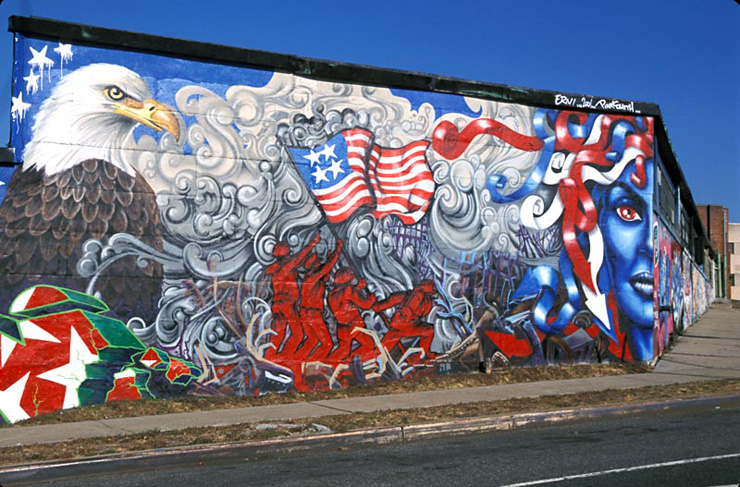 This wall in Queens, NY was painted by Lady Pink, Smith, Ernie and friends. (photo © Martha Cooper)
This wall in Queens, NY was painted by Lady Pink, Smith, Ernie and friends. (photo © Martha Cooper)Martha Cooper is a featured panelist at today’s panel discussion in Brooklyn called “Return Remember: Ephemeral Memorials in the Legacy of September 11” At Power House Arena. 37 Main Street Dumbo. 6-8 PM.
Martha Cooper will be signing copies of a new slim volume of images “Remembering 9/11” following the panel discussion. For more information about this event please click on the link below: